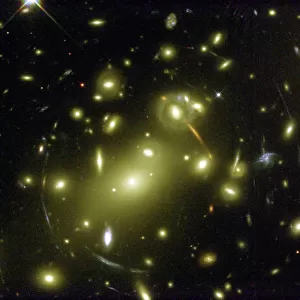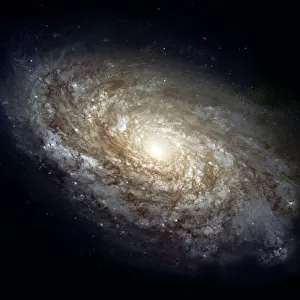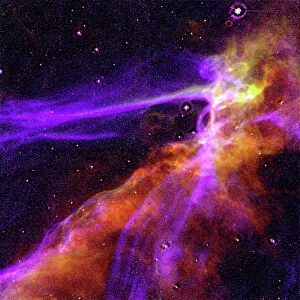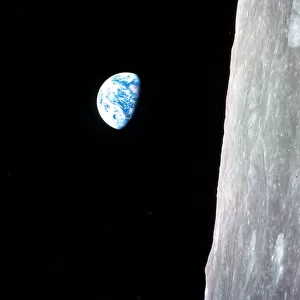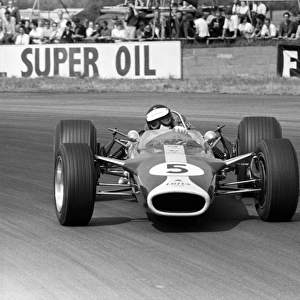Home > Science > Space Exploration > Nebulas
Cometary Knots Around A Dying Star
![]()

Wall Art and Photo Gifts from Space Images
Cometary Knots Around A Dying Star
These gigantic, tadpole-shaped objects are probably the result of a dying stars last gasps. Dubbed " cometary knots" because their glowing heads and gossamer tails resemble comets, the gaseous objects probably were formed during a stars final stages of life. Hubble astronomer C. Robert O Dell and graduate student Kerry P. Handron of Rice University in Houston, Texas discovered thousands of these knots with the Hubble Space Telescope while exploring the Helix nebula, the closest planetary nebula to Earth at 450 light-years away in the constellation Aquarius. Although ground-based telescopes have revealed such objects, astronomers have never seen so many of them. The most visible knots all lie along the inner edge of the doomed stars ring, trillions of miles away from the stars nucleus. Although these gaseous knots appear small, they re actually huge. Each gaseous head is at least twice the size of our solar system; each tail stretches for 100 billion miles, about 1, 000 times the distance between the Earth and the Sun. Astronomers theorize that the doomed star spews hot, lower-density gas from its surface, which collides with cooler, higher-density gas that had been ejected 10, 000 years before. The crash fragments the smooth cloud surrounding the star into smaller, denser finger-like droplets, like dripping paint. This image was taken in August, 1994 with Hubbles Wide Field Planetary Camera 2. The red light depicts nitrogen emission ([NII] 6584A); green, hydrogen (H-alpha, 6563A); and blue, oxygen (5007A)
Space Image feature a selection of NASA's incredible imagery
Media ID 635220
© NASA
Hubble Space Telescope Wfpc Aquarius Constellation Helix Nebula Wide Field Planetary Camera 2
FEATURES IN THESE COLLECTIONS
> Science
> Space Exploration
> Hubble Telescope
> Science
> Space Exploration
> Nebulas
> Space Images
> Hubble Space Telescope
EDITORS COMMENTS
This print showcases the mesmerizing beauty of cometary knots surrounding a dying star. Resembling gigantic tadpoles, these ethereal objects are believed to be the result of a dying star's last breaths. Dubbed "cometary knots" due to their comet-like appearance with glowing heads and gossamer tails, they were discovered by Hubble astronomer C. Robert O Dell and graduate student Kerry P. Handron while exploring the Helix nebula. Located 450 light-years away in the constellation Aquarius, this planetary nebula is the closest to Earth. While ground-based telescopes have previously captured glimpses of such objects, never before have astronomers witnessed such an abundance of them. The most prominent cometary knots can be found along the inner edge of the doomed star's ring, trillions of miles away from its nucleus. Although they may appear small, these gaseous formations are actually colossal in size. Each head alone is twice as large as our entire solar system, while their tails stretch for an astonishing 100 billion miles – equivalent to roughly 1,000 times the distance between Earth and Sun. Scientists theorize that these awe-inspiring structures originate from hot gas expelled by the dying star colliding with cooler gas ejected thousands of years earlier. This collision causes fragmentation within the smooth cloud enveloping the star, resulting in denser finger-like droplets akin to dripping paint. Captured by Hubble's Wide Field Planetary Camera 2 in August 1994 using different color filters (red for nitrogen emission [NII] at 6584A wavelength; green for hydrogen [H-alpha] at 6563A; blue for oxygen at 5007A), this image offers a breathtaking glimpse into cosmic phenomena occurring trillions of miles away from our own planet.
MADE IN THE USA
Safe Shipping with 30 Day Money Back Guarantee
FREE PERSONALISATION*
We are proud to offer a range of customisation features including Personalised Captions, Color Filters and Picture Zoom Tools
SECURE PAYMENTS
We happily accept a wide range of payment options so you can pay for the things you need in the way that is most convenient for you
* Options may vary by product and licensing agreement. Zoomed Pictures can be adjusted in the Cart.


